Latin American coffee bean flavor producing countries three major coffee varieties and seven major producing areas in the world
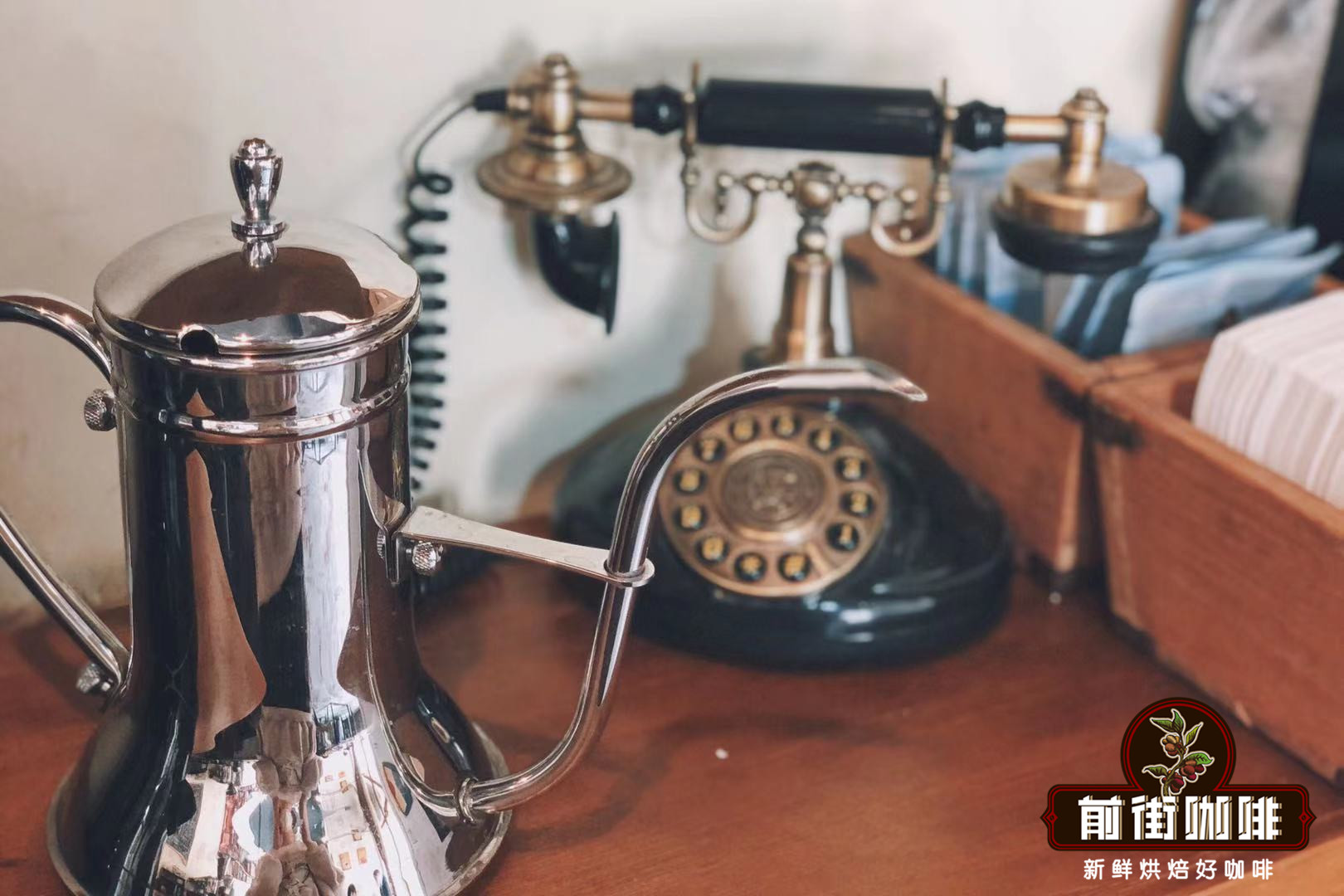
Professional coffee knowledge exchange more coffee bean information please follow the coffee workshop (Wechat official account cafe_style)
Latin America, which only began to grow coffee trees in the 18th century, has the advantages of sunshine, high mountains, rich, rainy and humid soil, and a variety of natural micro-environment. Now it has become the most important coffee producing area in the world. The front street coffee rations bean series, the Brazilian red wave side has the cocoa flavor, the Costa Rican Tara beads are gentle and supple, full of nuts, sweet aroma. Generally speaking, Latin American coffee beans have a pleasant aroma and a well-balanced flavor, usually with a special cocoa-like flavor with fresh and lively acidity. Latin American coffee is also very famous for the coffee of the Panamanian Emerald Manor. The sun red label of the Jade Manor provided by Qianjie Coffee smells of ginger and citrus, with ripe fruit, black tea, citrus, sour and sweet fruit tea in the mouth.
Characteristics of Latin American coffee beans: balanced, moderately sour and mellow
In 1721, French naval officer Gabriel Mathieu de Clieu went through difficulties and obstacles to bring the first coffee sapling from Africa to the Latin American island of Martinique, which was the origin of coffee cultivation in Latin America. Because France was under the Bourbon dynasty, Arabica coffee grown in Latin America had another name, bourbon, which is now famous in the coffee industry. Bourbon is now an important branch of coffee in Arabica.
The overall flavor of Latin American coffee is famous for its balance, and all the flavors in Latin American coffee can be found in Latin American coffee. The widespread use of water to treat raw beans is also one of the characteristics of Latin American coffee, good processing also makes its beans larger and more uniform than African coffee, and the defect rate is lower.
Representative:
Brazil: strong on the palate with a chocolate finish.
Columbia: light, well-balanced, nutty, with a sour finish
Jamaica Blue Mountain: sweet and sour balanced, mild, mellow, supple, dark chocolate flavor.
Brazil (South America)

Coffee producing areas | Coffee grading system in Brazil and four common processing methods in Brazil
The largest coffee producer, which accounts for 1/3 of the world's coffee consumption, accounts for 1/3 of the world's coffee consumption and has a place in the global coffee market, although Brazil faces several times more natural disasters than other regions. but its acreage is enough to make up for it.
There are many kinds of coffee here, but its industrial policy is large and cheap, so there is not much premium coffee, but it is a good choice for mixing other coffees.
One of the most famous is Sandos Coffee, which tastes mellow and neutral. It can be boiled directly or mixed with other kinds of coffee beans to form a comprehensive coffee. It is also a good choice.
The hilly woodland of 700m-1200m in South Minas is the earliest production area of Brazilian coffee. Due to the improvement of labor cost, it is now mostly harvested mechanically. Other kinds of Brazilian coffee, such as Rio and Parana, can be produced in large quantities because they do not need too much care. Although the taste is rough, it is a kind of coffee with good quality and low price.
Because it is distributed all over the country and its solid quality varies, it has its own standard (NO.2-NO.8 according to the number of sundries, NO.13--NO.19 according to the size of beans, and six grades according to taste). Almost all Arabica varieties are of good quality and stable in price. The most famous one is "Brazil Santos", which has been a necessity of blended coffee and is familiar to the public since ancient times. Recently, the "Guilma Cup" is also highly rated.
[Queen's Manor Yellow bourbon Coffee beans]
Producing area: Morgiana, Sao Paulo State
Altitude: 1400-1950m
Variety: yellow bourbon
Treatment: insolation
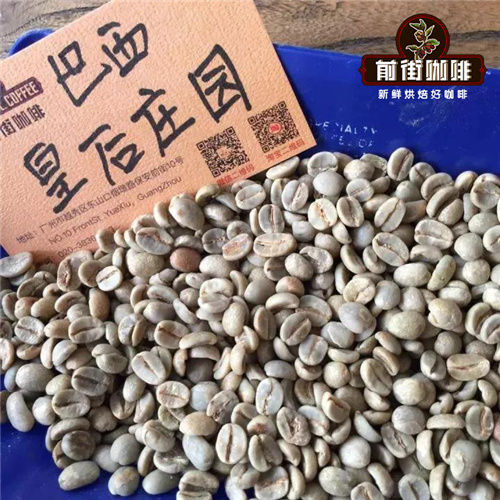
Brewing parameters: Kono filter cup used, water temperature 88℃, 15 grams of powder, 1:15 powder to water ratio, medium fine grinding (BG #6W)
Brewing method: use segmented extraction, 30 grams of water for stewing for 30 seconds, small water flow circle water injection to 125 grams of segmentation, water level is about to expose the powder bed continue to water injection to 225 grams stop,(stewing start timing) extraction time is 2 minutes.
Flavor Description: The palate has a distinct sweetness, with a hint of lemon aroma, rich nutty flavor, the latter part of the performance has a clear dark chocolate flavor, the overall feeling is relatively round.

Colombia (South America)
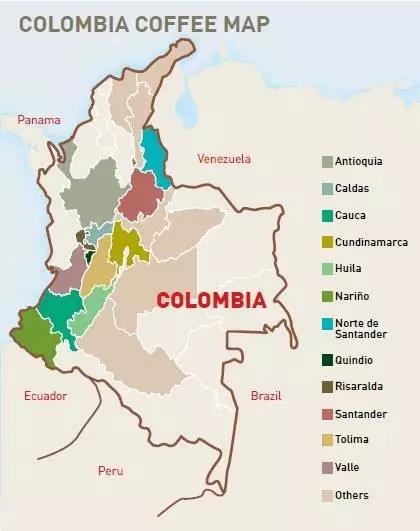
Colombia is one of the largest producers of high-quality coffee in the world, a bright pearl in the world coffee map and a coffee land blessed by God. Arabica coffee is grown on a steep slope at an altitude of 800,000m above sea level. It is hand-picked and washed.
Colombian coffee has a balanced flavor and a smooth taste, just like a gentleman in coffee. He has a wide range of producing areas, such as Medellin, Armenia and Manizales, which are commonly referred to as "MAM".
Colombia's boutique bean producing areas are mainly in the south, more than 1500 meters above sea level, including San Augustin, Huila in Huilan province, Popayan,Cauca in Cauca province, Nari ñ o province, and Tolima province, where products have delicate sour and raspberry aromas, caramel aromas and full sweetness.
Huilan, Colombia
Producing area: Huilan
Altitude: 1500-1800
Variety: Caturra Kaddura
Treatment: washing
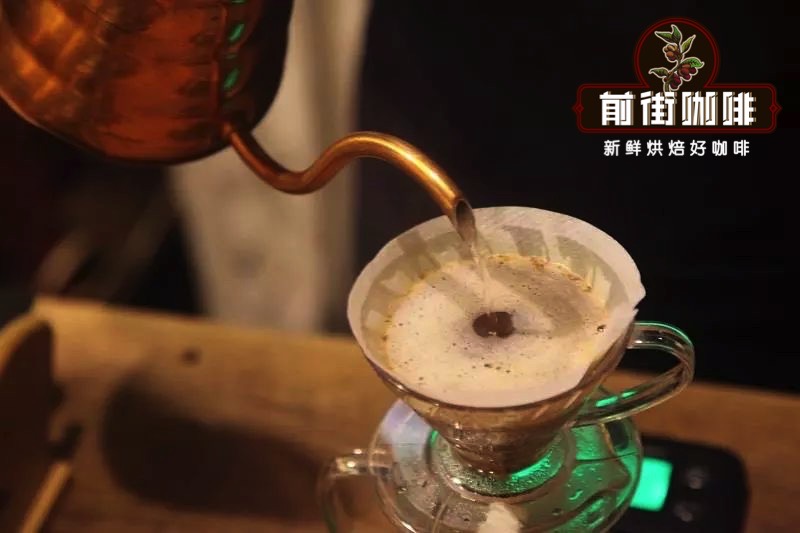
Cooking parameters: using KONO filter cup, 90 ℃ water temperature, 15 g powder, 1:15 powder / water ratio, medium and fine grinding (BG#6S)
Flushing and cooking technique: use staged extraction, 30 grams of water for steaming for 30 seconds, small flow circle water injection to 125 grams, when the water level is about to expose the powder bed, continue to inject water to 225 grams, (steaming starts) extraction time is 2 minutes.
Flavor description: the overall balance is relatively balanced, with obvious sweetness, dark chocolate, nuts and caramel in the mouth, and a soft acidity under the change of temperature.
Honduras (Central America)

Honduras is located in the north of Central America, facing the Caribbean Sea to the north, the Gulf of Fonseca in the Pacific Ocean to the south, Nicaragua and El Salvador to the east and south, and Guatemala to the west, mostly mountains and plateaus. It has a tropical climate, mild temperature and abundant rainfall, so it is an ideal place for coffee growth.
Honduras produces two kinds of coffee of very good quality, which are highly respected by coffee lovers. One is the "Highland Coffee", which is grown at an altitude of 1000 Muhammad 1500 Michael, and the other is the "selected Highland Coffee", which represents the highest level of Honduras, which is grown at an altitude of 1500 Murray 2000 Michael. Most of the Honduran coffee is exported to the United States and Germany.
Twenty years ago in Honduras, almost none of the items such as attention to details, environmental maintenance around the disposal site, investment in treatment equipment, export procedures, logistics and transportation of raw beans could compete with neighboring countries. The quality of raw beans was naturally coarse but not meticulous, and only a few manors or CoE winning batches could be called high-quality products. Since 2007, the situation has improved. Under the leadership of the IHCAFE Coffee Bureau and many far-sighted dry processing plants, Honduras has gradually achieved results in the improvement of the treatment process and the investment in raw bean processing equipment and transportation exports. even though the international market is still low-profile, active bean bakers have invested in Hongguo coffee-producing areas in an attempt to dig out high-quality products.
In terms of output, from 2011 to 2012, Honduran coffee even occupies the leading position in Central America, harvesting about 3 million bags (46kg) of coffee every year. In addition to the volume, IHCAFE and the production association and processing plant that are interested in carrying out a series of projects, hoping to provide international buyers with high quality and delicious Honduran coffee.
Honduran coffee has a rich and mellow taste, taste is not astringent, not sour, mellow and aroma are very high, quite suitable for beginners. Honduran coffee can lead to multiple levels of flavor depending on the degree of roasting. Moderate baking can maximize the sweetness of beans, while deep baking increases bitterness, but sweetness does not disappear. Generally speaking, medium roasting has the best taste and rich and unique aroma, which is favored by coffee lovers in Honduras.
[Honduran Shirley Coffee beans]
Producing area: Masaguara
Manor: Moca Manor
Altitude: 1500-1700m
Variety: Kaddura, Kaduai, Pacas
Treatment: fine washed whisky Shirley barrel fermentation

Cooking parameters: using Hario V60 filter cup, 90 ℃ water temperature, 15 g powder, 1:15 powder / water ratio, medium and fine grinding (BG#6S)
Flushing and cooking technique: use staged extraction, 30 grams of water for steaming for 30 seconds, small flow circle water injection to 125 grams, when the water level is about to expose the powder bed, continue to inject water to 225 grams, (steaming starts) extraction time is 2 minutes.
Flavor description: the mouth has aromas of vanilla and cream, sour notes of citrus and berries, almonds and dark chocolate in the middle, maple sugar in the end, vanilla in the finish, clear flavor and smooth taste. The flavor is stable from hot to cold, and there is no other miscellaneous flavor.
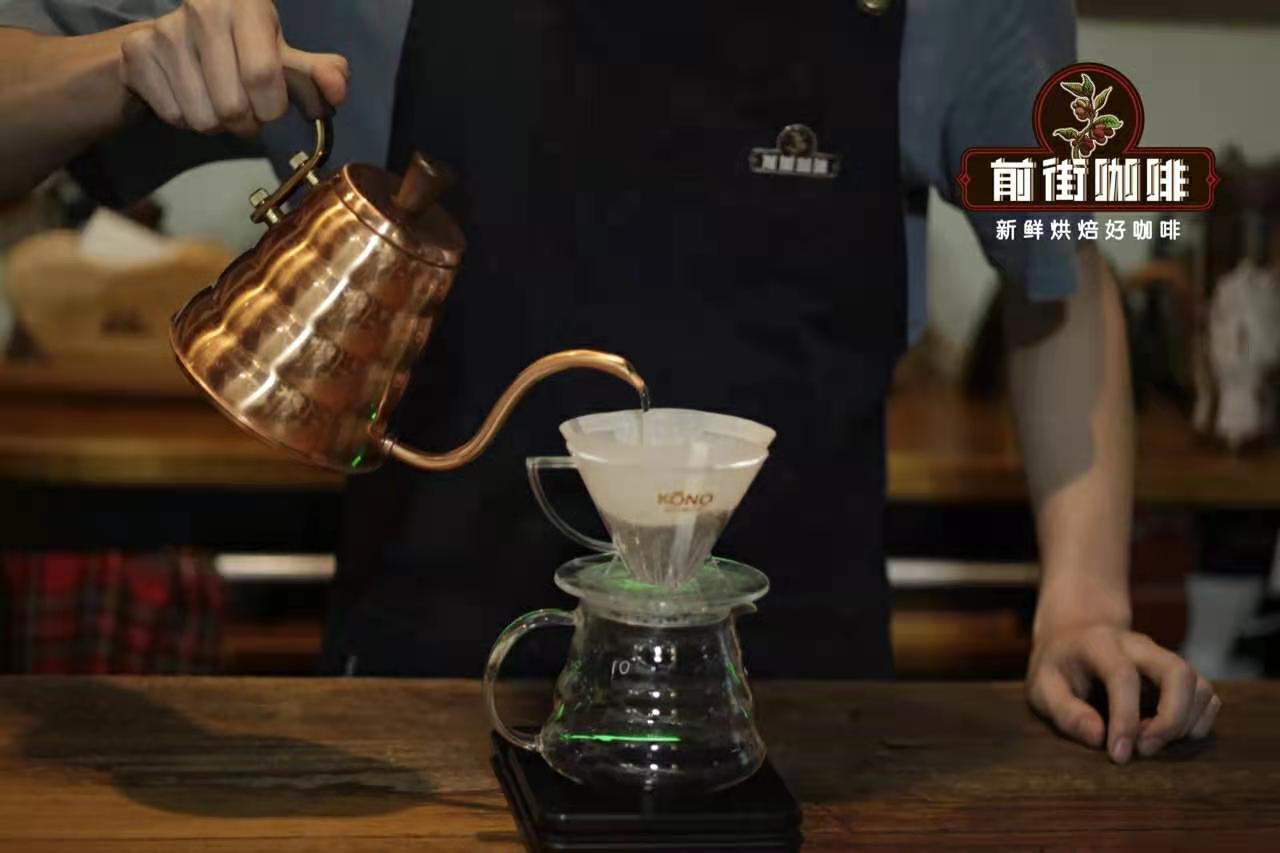
Panama (Central America)
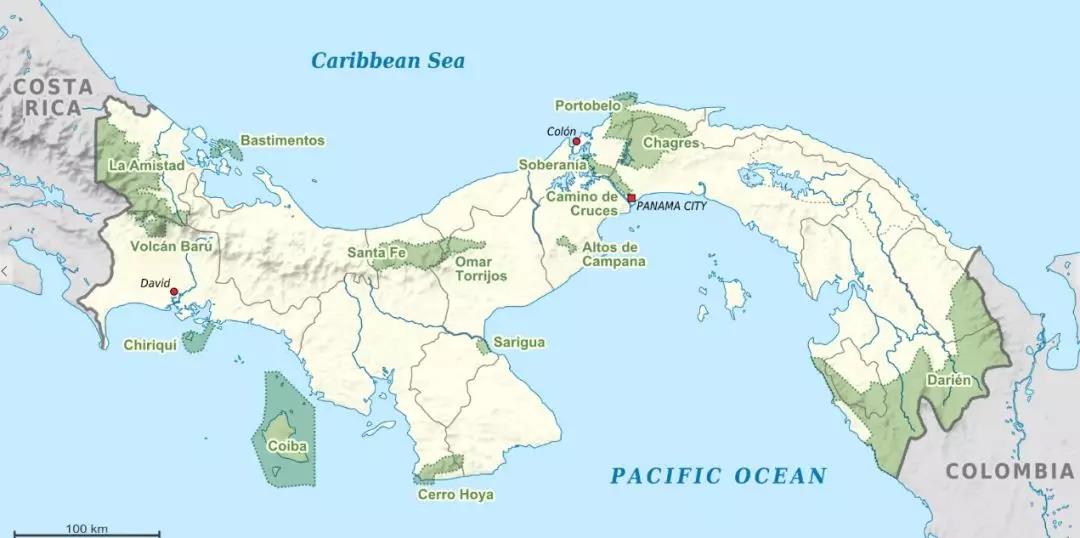
Panamanian caffeine is famous in the world, and the reason is that it is closely related to Panama's unique physical and geographical conditions. Panama is the southernmost country in Central America, bordering the Caribbean Sea to the east, the Pacific Ocean to the west, Costa Rica to the north and Colombia to the south-it is an important isthmus connecting North and South America. Under the influence of such geographical factors, Panama has a complex and changeable microclimate, which also creates a unique flavor of Panamanian coffee.
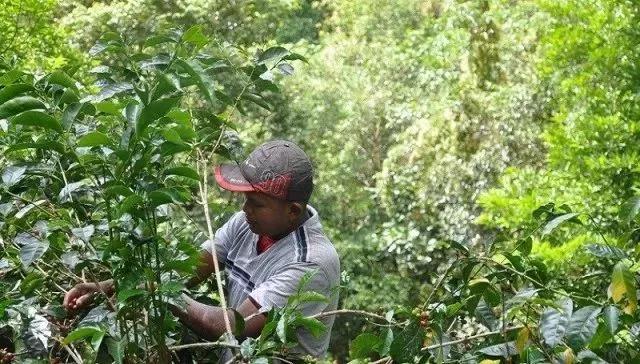
Panama is roughly divided into four producing areas:
Boquete Boquette producing area is 1450 meters above sea level.
The coffee produced in this area is the region with the highest coffee production and the best quality in Panama.
The Volcan Volcano producing area is 2000-3000 m above sea level
The coffee in this producing area is characterized by a mild and balanced flavor, which has gradually attracted the attention of international experts and coffee lovers.
Santa Clara Santa Clara producing area is 1500 meters above sea level
Due to the irrigation of Chorerra Falls and the adjacent Panama Canal, coffee from all over Panama can be easily transported to all parts of the world.
Piedra de Candela Kendra producing area is 1200 meters above sea level
This producing area is the most promising and has the potential to develop high-quality premium coffee.
One of the most prominent highlights in the history of Panamanian coffee is ─ Geisha. The distinctive features of Geisha are more intoxicating than the typical flavor of other Panamanian coffee. Under the expectations of the public, it also has a particularly high risk, high mortality, low yield, not easy pruning, but also requires complex and high-cost treatment in order to maintain its most primitive flavor.
Geisha's unique bright sour taste. In the Bean Hunter, the author ─ Xu Baolin describes that "if you don't know roses and summer beans all your life, you can call it a glutton in vain." this shows its undisputed position in the coffee circle. Is Rose Xia's surname 'Gui'? My last name is not Gui, my last name is' Gui'!
[Panamanian Hartmann Coffee]
Producing area: Walken
Manor: Hartman Manor
Altitude: 1250-1700m
Variety: Kaduai
Treatment: red wine treatment
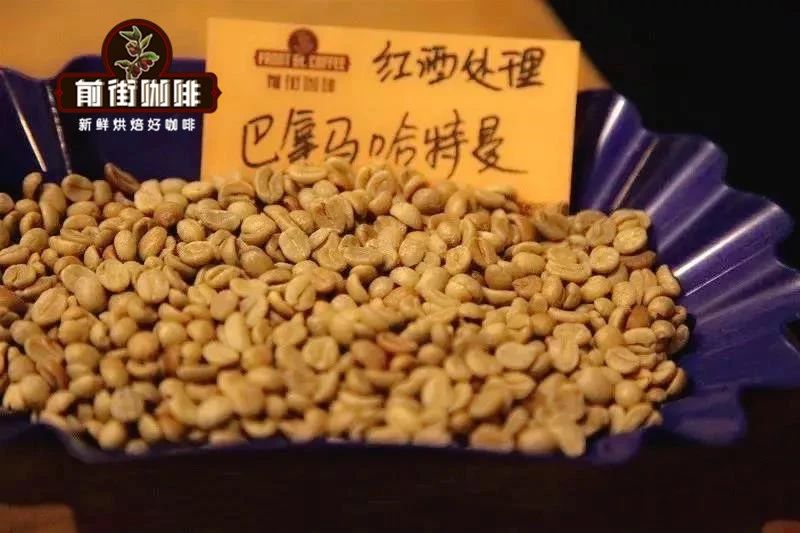
Cooking parameters: using Hario V60 filter cup, 90 ℃ water temperature, 15 g powder, 1:15 powder / water ratio, medium and fine grinding (BG#6S)
Flushing and cooking technique: use staged extraction, 30 grams of water for steaming for 30 seconds, small water injection to 125 grams, continue to water injection to 225 grams to stop, (steaming starts to time) extraction time is 2 minutes.
Flavor description: the texture is mellow, the sweet and sour feeling is obvious, the entrance is smooth and has a very rich red wine taste, high sweetness, lively and bright acidity, rich layers, obvious aftertaste of tropical fruits, nuts, red wine, honey and sucrose. Yellow sugar flavor after complete cooling.
Costa Rica
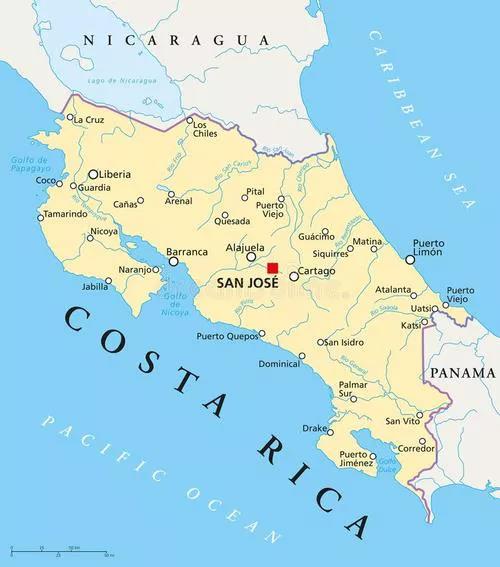
The coffee beans produced at the high latitudes of Costa Rica are famous in the world, full-bodied, mild in taste, but extremely sour. The coffee beans here have been carefully processed, which is why they have high quality coffee. The famous coffee is produced in the Central Plateau (Central Plateau), where the soil consists of successive layers of volcanic ash and dust.
Excellent Costa Rican coffee beans are called "extra hard beans", and their classification criteria are:
Special hard bean SHB (Strictly Hard Beans) is above 1200 meters (3900 feet) above sea level.
Good hard bean GHB (Good hard Beans) 1200m above sea level (3900 m / m)
Medium hard bean MHB (Medium Hard Beans) 1000m above sea level (3300m / 1600ft)
Colombia's most mature treatment [honey-treated] coffee generally has a great balance of sweetness and acidity, and the flavor is generally not as strong as the sun-cured coffee, but it is fresher and mellow. the key to the flavor difference lies in the sugar and acidity of the pectin layer. during exposure, the sugar in the pectin layer becomes more and more concentrated, and these sugars soak into the coffee beans.
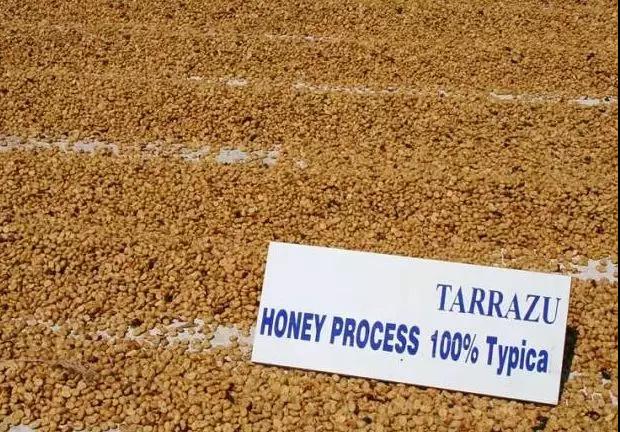
Its three most famous producing areas are Tarasu, south of the Costa Rican capital SanJose, as well as the producing areas of the Central Valley and the western valley. Tanning is a very traditional practice, which uses the least resources, but because there are too many uncontrollable factors, it is very difficult to do well.
The beans grown in Costa Rica are Caturra, Catuai and Villa Sarchi, as well as a small number of Kenyan species SL28, Obata and so on.
Villasarchi Vera Saatchi\ Vera Saatchi
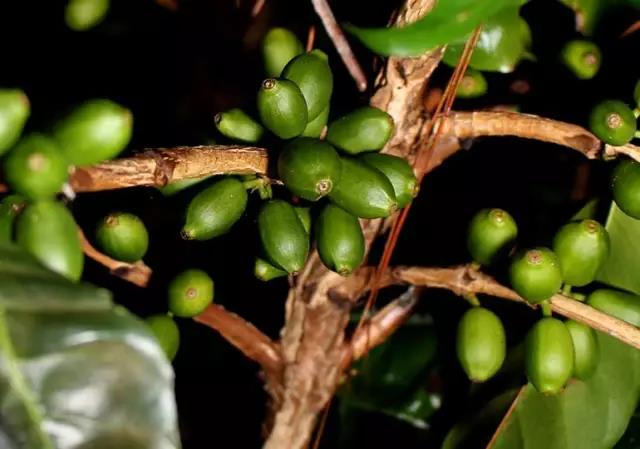
Produced in Costa Rica, is a variety of Tippica, like Tippica, the angle between the branch and trunk is 60 degrees, and the leaves are bronze.
[Costa Rican Mozart coffee beans]
Producing area: Tarazhu
Manor: Carnett Manor
Altitude: 1950m
Variety: Kaddura, Kaduai
Treatment: raisin honey treatment

Cooking parameters: using Hario V60 filter cup, 90 ℃ water temperature, 15 g powder, 1:15 powder / water ratio, medium and fine grinding (BG#6S)
Flushing and cooking technique: use staged extraction, 30 grams of water for steaming for 30 seconds, small flow circle water injection to 125 grams, when the water level is about to expose the powder bed, continue to inject water to 225 grams, (steaming starts) extraction time is 2 minutes.
Flavor description: the entrance is complex floral and fermented sauce, with raisins and dried fruit-like sweetness, with sour notes of carambola and berries, sucrose back to sweet.
Guatemala

Taste characteristics: bitter and fragrant, good taste
The central region of Guatemala is home to world-famous coffee with excellent flavor. Most of the coffee beans here have charcoal flavor and cocoa flavor, but their acidity is slightly stronger. Slightly sour, mellow and smooth, it is the best material for mixed coffee. The classification is divided into seven grades according to the elevation. The higher the origin, the more mellow the coffee beans are, while the coffee beans from the lower areas are of lower quality.
[Pakamara]: a variety of coffee that is a hybrid of Pacas Pacas (a sudden variant of the bourbon species) and giant bean Maragogype (elephant bean) found in El Salvador in the 1950s.
[Guatemala producing area]
Guatemala is divided into eight major producing areas, five volcanic producing areas and three non-volcanic producing areas, namely Antigua, traditional Attland, Koban Rain Forest, New Oriental, San Marcos Volcano, Akatilando Valley, Vivi Plateau and Farrakhan Nice Plain.
Even in the same producing area, the flavor may not be the same. For example, in the Wei Wei Plateau, across a mountain, the flavor of coffee can immediately feel a great change. Coupled with the increasing diversity of varieties and treatments, the flavor of coffee presents a situation in which a hundred schools of thought contend.
[non-volcanic producing areas]
Among the three major non-volcanic coffee producing areas in Guatemala, the Weiwei Plateau has the driest climate and the highest altitude. Coffee bean flavor is characterized by high acidity, bitter and fragrant, with wine aftertaste, good taste.
Koban rainforest producing area, the biggest feature of this region is rainforest, which has two seasons a year, heavy rainy season and light rainy season. The tropical rainforest in this area is accompanied by high humidity and sufficient nutrients. The most important feature of coffee flavor is the strong fruit flavor, which is closely related to the high local humidity.
The New Oriental region, located in the easternmost part of Guatemala, has the latest start of coffee farming and was once the most remote and poorest area in Guatemala. The rainy and foggy characteristics make it somewhat close to the Koban rainforest, but with slightly less moisture and rainfall. The soil is rich in minerals and balanced in nutrition. Coffee beans are characterized by a balanced taste, mellow thickness and chocolate flavor, but the acidity is the lowest of the eight Guatemalan regions, and chocolate is the main feature of New Oriental.
[volcanic producing area]
Antigua, one of the most famous coffee producing areas in Guatemala, has the highest award frequency and is called "classic". Its main characteristics are rich volcanic soil, low humidity, sufficient sunshine and large temperature difference between day and night. This area is surrounded by three volcanoes: Agua, Fuego and Acatenango. Fuego is one of the three most active volcanoes in Guatemala. Due to the frequent occurrence of local volcanoes, volcanic pumice can maintain moisture and provide a continuous stream of volcanic ash and minerals for the soil of the region, overcoming the lack of rainfall in Antigua, creating a very balanced flavor of local coffee.
Akatilange Valley producing area, up to 2000 meters above sea level, dense shade and unique ecology, nearby volcanoes continue to erupt, making the soil rich in various fertile minerals and becoming the best local natural fertilizer. Coffee is mainly processed by family-style traditional methods. The flavor of coffee beans is similar to that of Antigua, but the acidity is slightly lower, the dry and wet aroma is remarkable and pleasant, the mellow thickness is full, the aftertaste is clear and the aroma is refreshing.
In the traditional Atilan producing area, among the five major volcanic regions, the organic composition in the soil is the most abundant. The area has long accumulated excellent planting and processing techniques. 90% of the coffee is grown on the severe volcanic slopes on the shores of Lake Attilan. it's about 1300-2000 meters above sea level. Coffee beans are characterized by mild acidity, bright orange peel aroma and good mellowness.
Farrakhan Nice Plain producing area, volcanic producing area, high altitude, rich in minerals in the soil, coffee bean flavor tends to be balanced, but has a more unique aroma and flavor than Antigua.
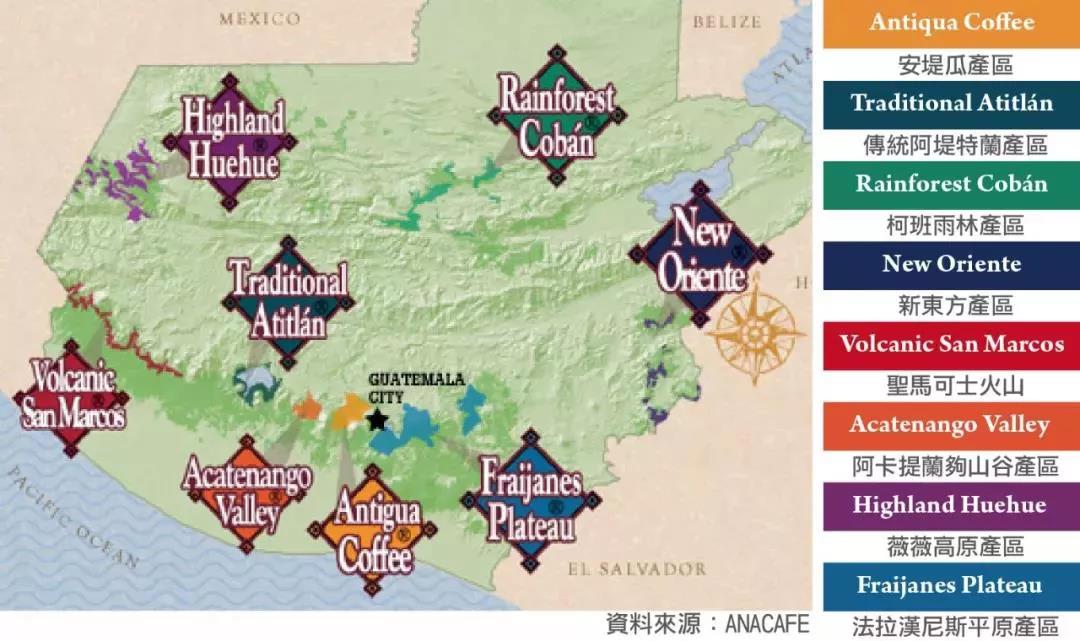
[Antigua Hua Shen Coffee beans]
Producing area: Antigua
Manor: Raminita Manor
Altitude: 1850m
Varieties: bourbon, Kaddura, Kaduai
Treatment method: washing treatment method
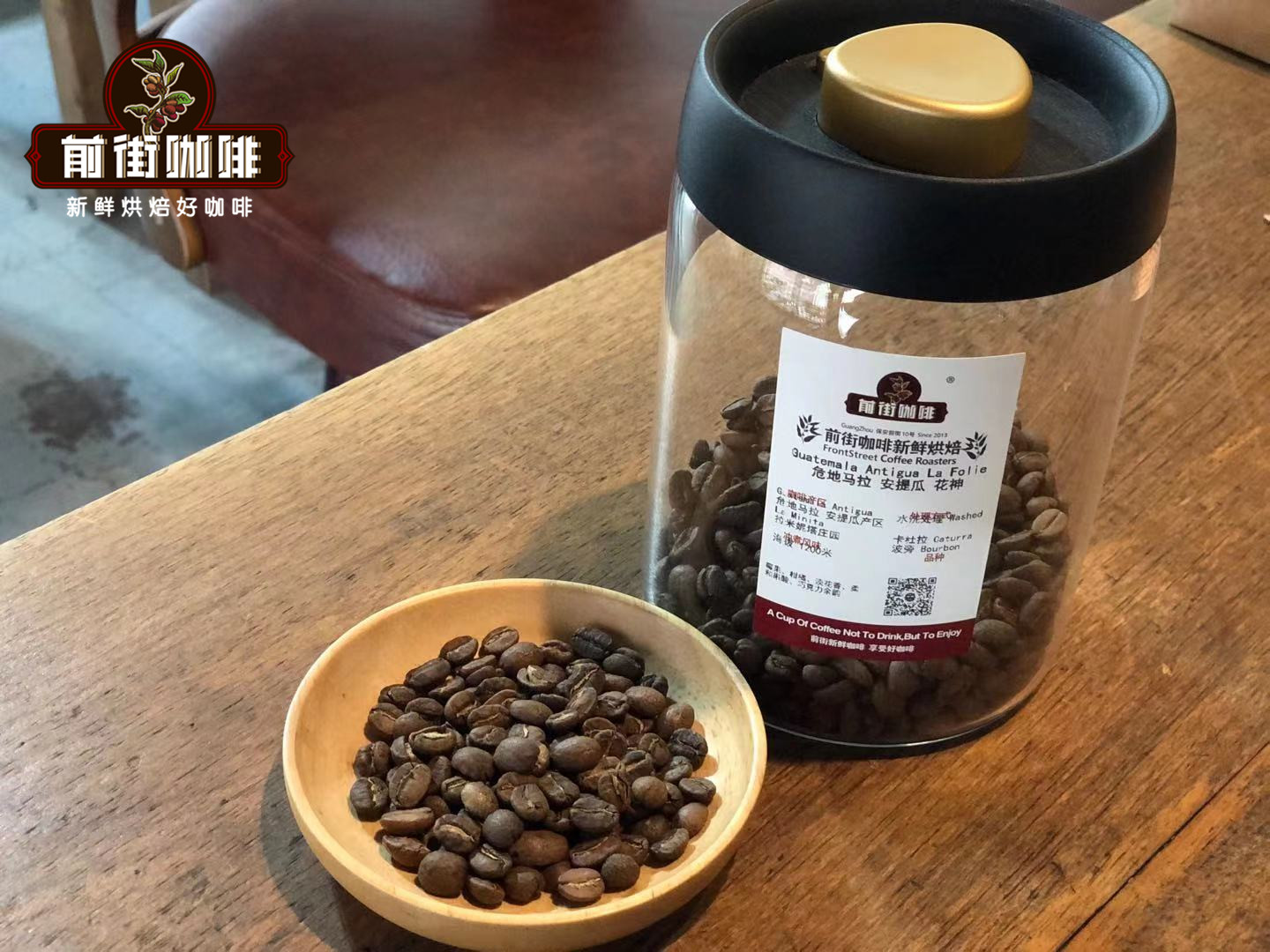
Cooking parameters: using Hario V60 filter cup, 90 ℃ water temperature, 15 g powder, 1:15 powder / water ratio, medium and fine grinding (BG#6S)
Flushing and cooking technique: use staged extraction, 30 grams of water for steaming for 30 seconds, small flow circle water injection to 125 grams, when the water level is about to expose the powder bed, continue to inject water to 225 grams, (steaming starts) extraction time is 2 minutes.
Flavor description: citrus acid is obvious, rich floral aroma, pleasant sweetness, medium mellow, slightly caramel in the back, balanced and clean as a whole, smooth texture.

Peru Pero

Peruvian coffee will have obvious chocolate, cream and herbal flavors, the main beans are iron pickup, bourbon and Kaduai.
Main producing areas of Peru
In the north, nearly 70% of Peru's coffee comes from here, mainly organically grown.
In the middle, the region is located at a high altitude (1200murmur2000m), and most of the coffee is grown organically, with elegant and supple acidity and a well-structured taste.
Peruvian coffee is grown in a planned way, which has greatly increased coffee production. Its rich acidity and mellow smoothness are its most prominent features. Peruvian coffee has a soft sour taste, medium texture, good taste and aroma, and is an indispensable ingredient in the production of comprehensive coffee. High-quality Peruvian coffee has a strong aroma, smooth, layered, rich and sweet, with soft acidity and rich dark chocolate beans.
Ecuador Ecuador

The ever-changing ecosystem has created Ecuador's rich coffee flavor, but most of them still show classic South American characteristics, such as medium mellow thickness, high acidity and high sweetness. Most of the coffee is grown organically, and coffee at high altitudes is of good quality.
Main producing areas of Ecuador
The province of Manabi, which is dry near the sea and at an altitude of 300m, is Ecuador's largest coffee-producing region, and its Arabica accounts for the country's average production.
The province of Zamora Chinchipe (Zamora chinchipe), located in the southeast of Ecuador at a high altitude of 1000murmuri 1800m, mainly produces washed Arabica with a bright, sweet and berry flavor.
In the provinces of Loja and El oro, 20% of the country's Arabica comes from this region, and coffee beans are almost all sun-treated because of the dry climate.
Jamaica Blue Mountains
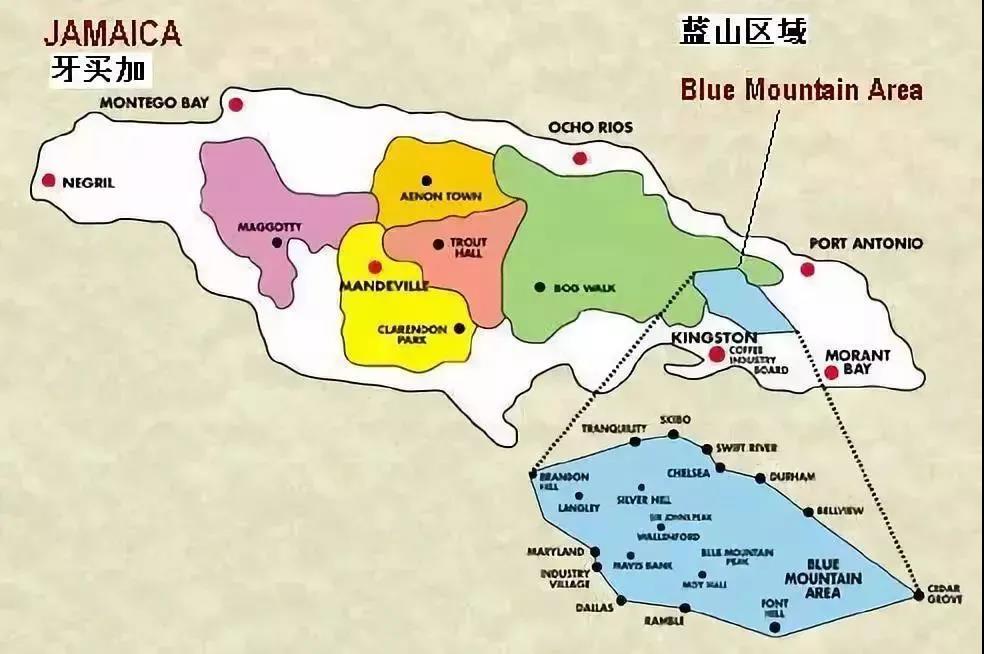
When it comes to drinking coffee, many friends will immediately say, "give me a cup of Blue Mountain." Jamaican Blue Mountain Coffee has a high reputation, low production and a long history. It can be said that even if you have never tasted boutique coffee, you have heard of Blue Mountain Coffee.
Three major producing areas of Blue Mountain Coffee
The Blue Mountain area is a small area with a planting area of only 6000 hectares, and it is impossible to grow all the coffee marked "Blue Mountain" there. Another 12000 hectares are used to grow two other types of coffee (non-Blue Mountain Coffee): Alpine Top Coffee and Jamaican Coffee.
According to the bean size, the grade is divided into NO.1, NO.2, NO.3 and hand-selected PB, in which NO.1 's basic standard of Lanshan raw beans is beans with more than 17 mesh, defect rate less than 3%, moisture content about 13%, and so on. In addition, so far, Lanshan Coffee raw beans are treated only by water washing, and there are no sun and other treatments.
Jamaica Blue Mountain Coffee Bean treatment
Jamaica Blue Mountain coffee beans are mainly washed with water. This is to ensure the standard flavor of Blue Mountain Coffee, but this year we all have some luck. The sun version of Blue Mountain Coffee has been successfully produced. The sun treatment of Blue Mountain Coffee can be said to be an unprecedented innovative attempt, and the R & D team has also gone through thousands of experiences. Not only can it be exported without washing raw beans with the permission of the Ministry of Agriculture of Jamaica, but also to inspect and learn from the experience of excellent manors many times to adjust the treatment plan.
Grading of Jamaican Blue Mountain Coffee beans
There are three grades of coffee in the Blue Mountains of Jamaica: blue Mountain Coffee (Blue Mountain Coffee), Alpine Coffee (Jamaica High Mountasin Supreme Coffee Beans) and Jamaican Coffee (Jamaica Prime Coffee Beans).
There are grades under the Blue Mountain Coffee. From high to low is: blue Mountain No. 1, Blue Mountain No. 2, Blue Mountain No. 3, PB (also known as public beans, round beans).
Blue Mountain No. 1 (No.1): 96% of raw beans are 17x18-mesh beans, with a defect rate of less than 2%.
Blue Mountain No.2 (No.2): 96% of raw beans are 16x17-mesh beans, with a defect rate of less than 2%.
Blue Mountain No. 3 (No.3): 96% of raw beans are beans with 15 grams and 16 mesh, with a defect rate of less than 2%.
PB:96% raw beans are PB, and the defect rate is less than 2%.
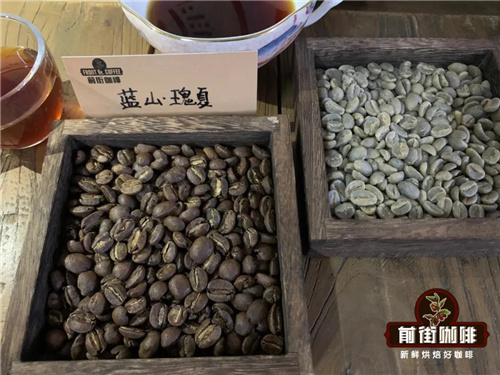
[Jamaican Blue Mountain Coffee beans]
Producing area: blue Mountain
Manor: Clifton Manor
Altitude: 1310m
Variety: iron pickup
Treatment: water method
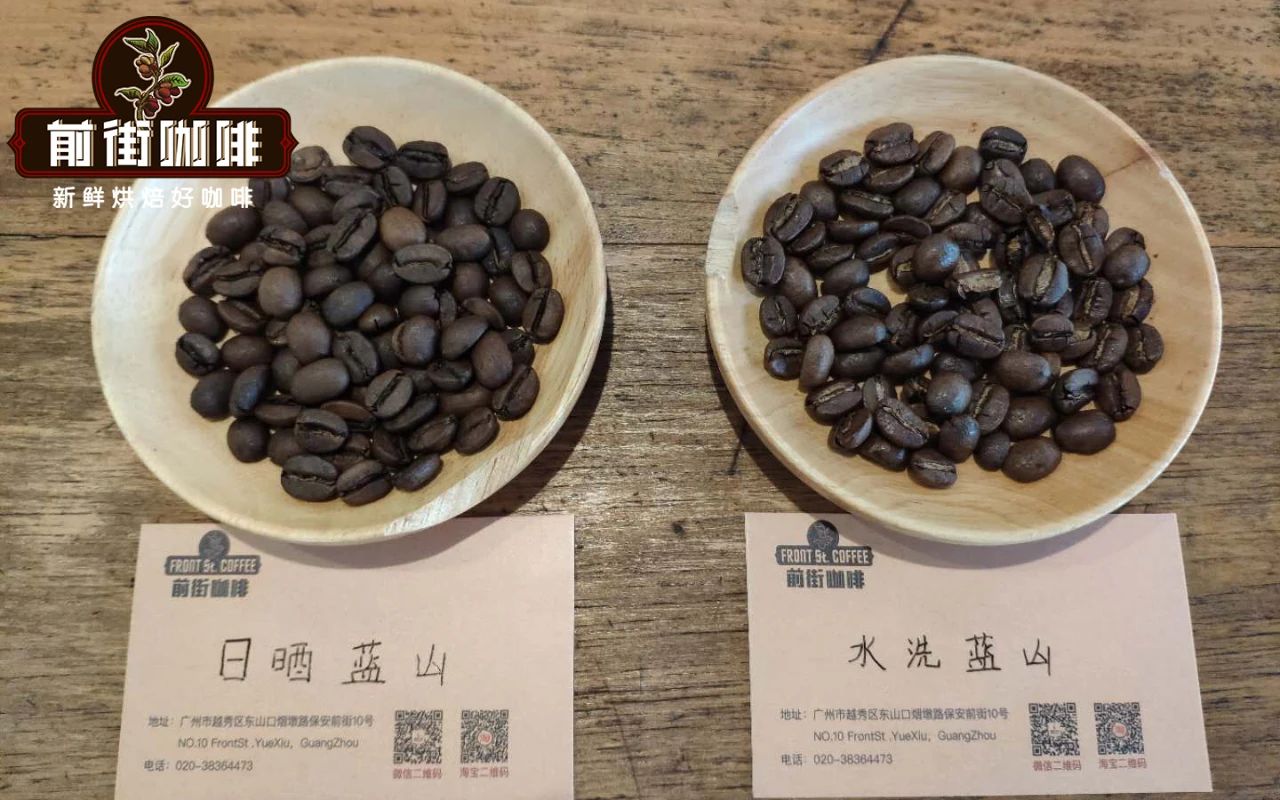
Cooking parameters: use Kono filter cup, 88 ℃ water temperature, 15g powder, 1:15 powder / water ratio, medium and fine grinding (BG#6W)
Flushing and cooking technique: use staged extraction, 30 grams of water for steaming for 30 seconds, small flow circle water injection to 125 grams, when the water level is about to expose the powder bed, continue to inject water to 225 grams, (steaming starts) extraction time is 2 minutes.
Flavor description: taste clean and mild, full-bodied and mellow, dark chocolate, nuts, cream, sweet and sour balance.
Bolivia (Bolivia)
In Bolivia, the development of its coffee is limited by transportation difficulties, but the quality is not poor at all. Bolivian beans are of good quality, with obvious fruit tone and sometimes floral fragrance.
Especially when Miki Suzuki of Japan won the world runner-up with Bolivia's geisha at the WBC (World barista Competition) held in Seoul in 2017, Bolivia, a coffee producer, became even better known. Most of the Bolivian beans are iron pickup, Kaddura and Kaduai, and they are grown organically almost everywhere.
Bolivia has a variety of topography; its capital, La Paz, is 3500 meters above sea level in the western part of the country. High altitude brings great advantages to coffee cultivation, but the Bolivian coffee industry is still weak, with an annual output of only 150000 sacks.
Farmers in Bolivia mainly use water washing to treat raw beans, and some occasionally use sun or honey treatment. It is worth mentioning that because Bolivia has a colder climate than other coffee-producing countries, many farmers use machines to dry rather than sun-dry.
[Bolivia Valiki Manor Cocoa Solar Java]
Coffee producing area: la Paz La Paz
Planting altitude: 1600 m
Coffee variety: Java Java
Treatment method: cocoa sun treatment Coco natural

Cooking parameters: use Kono filter cup, 88 ℃ water temperature, 15g powder, 1:15 powder / water ratio, medium and fine grinding (BG#6W)
Flushing and cooking technique: use staged extraction, 30 grams of water for steaming for 30 seconds, small flow circle water injection to 125 grams, when the water level is about to expose the powder bed, continue to inject water to 225 grams, (steaming starts) extraction time is 2 minutes.
Flavor description: slightly fermented, grape, light nut, floral aroma, medium acidity, fruit juice taste
For more boutique coffee beans, please add private Qianjie coffee on Wechat. WeChat account: kaixinguoguo0925
Important Notice :
前街咖啡 FrontStreet Coffee has moved to new addredd:
FrontStreet Coffee Address: 315,Donghua East Road,GuangZhou
Tel:020 38364473
- Prev
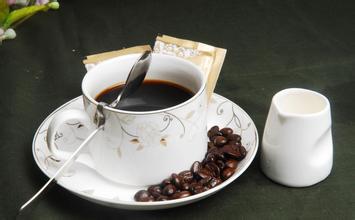
Introduction to variety classification of Ethiopian coffee beans by description of taste and flavor
Ethiopian coffee classification Ethiopian beans are easy to recognize, mostly small and pointed long beans, known as longberry, and often mixed with small oval-shaped short beans, called shortberry, look uneven in size and appearance. The commercial bulk beans of Grade4 or Grade5 are mostly mixed with hundreds of different crystal seeds in different producing areas, so the bean phase
- Next
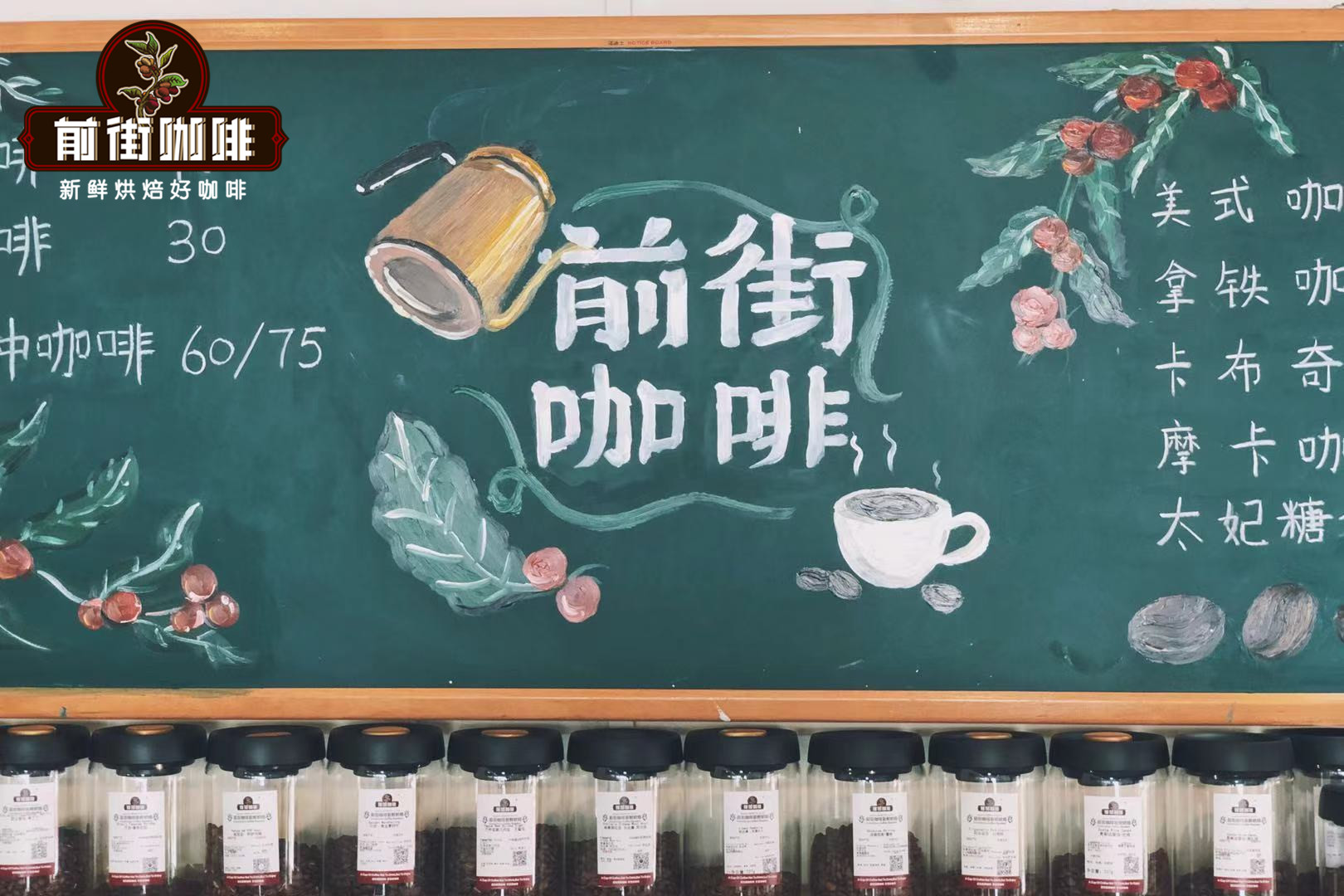
Brazilian Queen's Manor Red and Yellow Bourbon Coffee beans Queen's Manor Coffee Flavor Story
Introduction of boutique coffee beans: Hirado varieties: yellow bourbon treatment: sun bourbon species, native to Bourbon Island in the Indian Ocean (now known as Reunion Island), is the second species of Typica mutation, and Ironka belong to the oldest existing coffee varieties, the green fruit will show bright red when ripe, while the yellow bourbon species is hybridized with other varieties. Because of its production
Related
- Detailed explanation of Jadeite planting Land in Panamanian Jadeite Manor introduction to the grading system of Jadeite competitive bidding, Red bid, Green bid and Rose Summer
- Story of Coffee planting in Brenka region of Costa Rica Stonehenge Manor anaerobic heavy honey treatment of flavor mouth
- What's on the barrel of Blue Mountain Coffee beans?
- Can American coffee also pull flowers? How to use hot American style to pull out a good-looking pattern?
- Can you make a cold extract with coffee beans? What is the right proportion for cold-extracted coffee formula?
- Indonesian PWN Gold Mandrine Coffee Origin Features Flavor How to Chong? Mandolin coffee is American.
- A brief introduction to the flavor characteristics of Brazilian yellow bourbon coffee beans
- What is the effect of different water quality on the flavor of cold-extracted coffee? What kind of water is best for brewing coffee?
- Why do you think of Rose Summer whenever you mention Panamanian coffee?
- Introduction to the characteristics of authentic blue mountain coffee bean producing areas? What is the CIB Coffee Authority in Jamaica?

